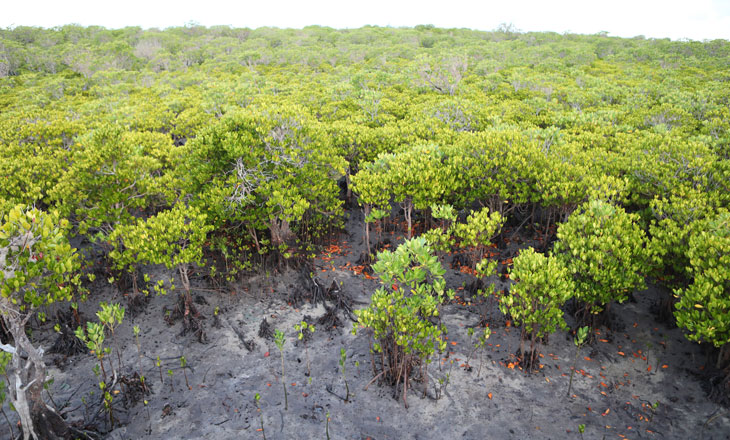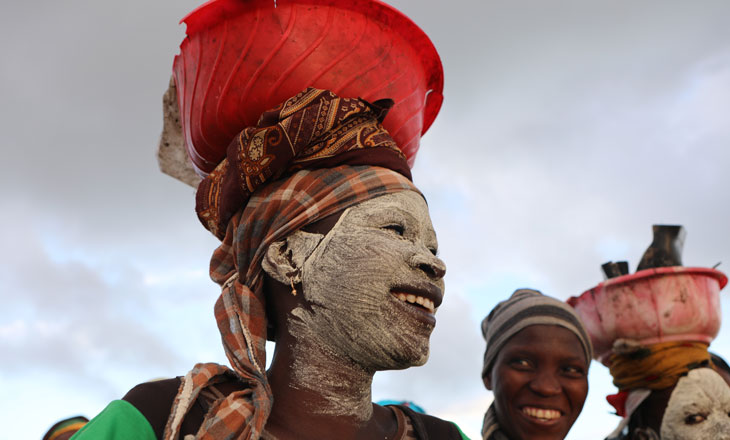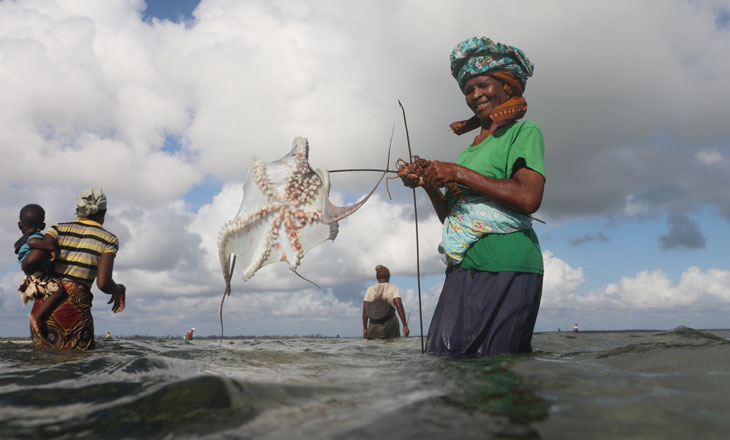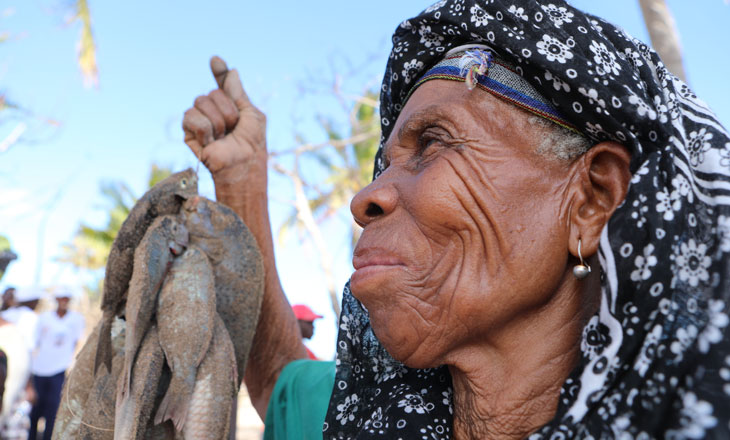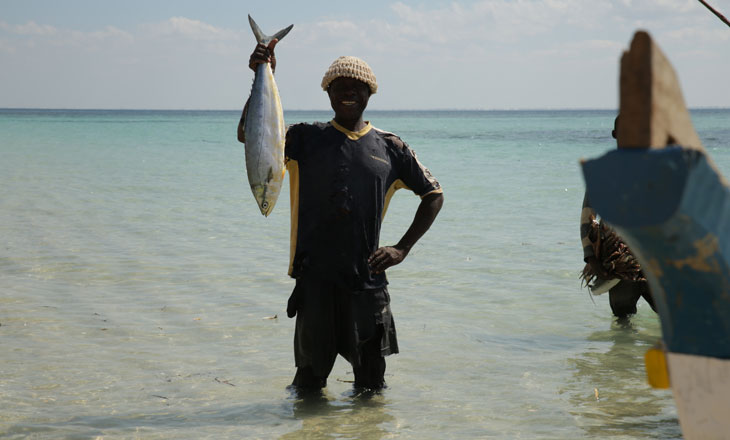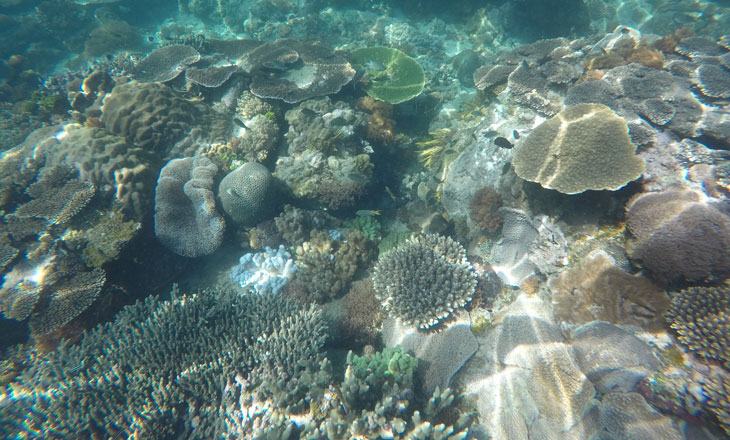Updated at 28/10/2019
Primeiras e Segundas Environmental Protection Area
Facts/context about the Primeiras e Segundas Environmental Protection Area
Coverage area
Located in the northern Mozambique, between the provinces of Nampula and Zambezia, the Primeiras e Segundas Environmental Protection Area (PSEPA) is one of the largest marine areas in Africa.
Global, regional and local relevance
With an area of approximately 1,040,926 ha (hectares) and a land area of 205 km, the archipelago of the Primeiras and Segundas Islands forms a region of great marine influence where an extensive “deep mountain range” of reefs develops and surface in some locations, rich in biological diversity. The archipelago is an integral part of the East African Marine Eco-Region that runs from southern Somalia to the Kwazulu-Natal coast of the Republic of South Africa. PSEPA environmental protection ensures the physical and environmental integrity of the habitat linking coastal and marine areas.
Biodiversity and conservation
Species and habitats
- Coral reefs contain at least 56 coral genus and 194 reef fish species.
- Mangrove forests extend over 57,000 ha with six mangrove species
- Seagrass beds have been identified eight seagrass species
- Contains five species of sea turtles in this area – at least one of them nesting on the islands – as well as nesting areas for seabirds.
- Habitat of the endemic Icuria dunensis coastal forest
Communities and Livelihoods
PSEPA demographic data show a relatively high population density rate (around 100 inhabitants / km2) and population growth rate (2.8% per year). The female population is slightly larger than the male. In general, people living in PSEPA have a very high illiteracy rate (85% women and 53% men) and chronic poverty (55% poverty rate).
PSEPA districts including Angoche, Moma, Larde and Pebane have high rates of lack of access to basic services (education, health, water and sanitation, energy, road transport, financial services, etc.) making them vulnerable to climate impacts including storms, cyclones, droughts and heavy rainfall associated with the high reliance of coastal communities on coastal and marine resources. The provinces of Nampula and Zambezia have the largest number of artisanal fishers populations in the country, migrants, mainly with destructive and intense fishing practices, which reduces the availability of fishing resources and negatively affects the health of ecosystems and people’s livelihood. The area has more than 340,000 inhabitants, including approximately 40,000 artisanal fishers.
Threats
- Illegal and destructive fishing
- Overfishing
- Illegal mangrove cutting
- Climate changes
- Economic development and exploitation of mineral resources
Illegal and unregulated activities have been taking place in PSEPA, mostly related to illegal fishing and trade in marine and coastal resources. This represents a major challenge for the conservation of coastal and marine resources at PSEPA.
The recent growth of the extractive industry in PSEPA that overlaps with high biodiversity areas on the islands is in conflict with conservation initiatives and does not effectively contribute to the livelihoods of local communities and negatively impact biodiversity.
The geographical location of PSEPA puts ecosystems and communities in conditions of high vulnerability to the impact of climate change, particularly with regard to extreme weather events such as cyclones, heavy rainfall and drought.
The PSEPA category foresees the promotion of development activities, however, and having to meet the PSEPA conservation objectives, the resulting economic development in the region presents a threat / challenge for biodiversity conservation considering the magnitude of the projects, location and impacts generated in this environmental area. There is an urgent need for communities, civil society and the government to promote participatory conservation management ensuring the promotion of sustainable development.
Conservation and sustainable use of natural resources
Care-WWF Alliance work (activities and success stories)
Illegal Activity Monitoring (SMOG)
Between 2008 and 2018 CARE International and WWF in Mozambique worked in the geographical area of the Primeiras and Segundas Environmental Protection Area. In 2008, the two organizations (supported by the Sall Family Foundation) decided to join forces and establish an Alliance to respond to the challenges of conserving natural resources and sustainable development of local communities.
The Alliance has played a key role in understanding local biodiversity and the promotion and livelihoods of local communities that rely heavily on natural resources for survival.
The Alliance’s work has focused primarily on natural resource management and enhancement of ecosystems and services, promotion of conservation agriculture, community capacity building in economic management and savings credits, advocacy and active participation in natural resource management, climate change adaptation, among other actions.
With the support of Alliance, the Government of Mozambique declared PSEPA as a protected area and a management plan was officially developed and approved by Decree No. 42/2012 issued on 12 December 2012 by the Government of Mozambique.
Livelihood activities implemented by the Alliance have increased the well-being of communities. Increased productivity and the establishment of farmers’ associations have resulted in better market access conditions, improved environmental awareness of the importance of biodiversity in the region, and the start of the community monitoring of illegal exploitation of marine and coastal resources – SMOG , creation of natural resource management committees, mangrove replanting, and promotion of scientific research to better understand the ecological dynamics in the region.
PSEPA Management
- Governance (Management Plan and Management Model)
- BIOFUND’s contribution to the future of PSEPA
- Advocacy and awareness raising (discussion forums)
- Long Term Support – Conservation International (Endowment)
- Medium term support – PROMOVE Biodiversity
- Compilation and dissemination of biodiversity data and information (Biblioteca virtual)
The Conservation Area management in Mozambique is under the responsibility of the National Conservation Area Administration – ANAC.
Co-management – PSEPA management is based on a participatory approach that allows the collaboration of different stakeholders (government, communities, private sector, civil society and others).
The PSEPA is particularly important to BIOFUND as the Foundation’s endowment includes since 2015 a USD 1 million grant from Conservation International, with revenues exclusively aiming to support the long-term management and administration of this conservation area.
New partnership with the European Union – In 2017, the European Union chose BIOFUND as a vehicle for its support for biodiversity in the country, making PSEPA one of the priority areas. The PROMOVE Biodiversity program, with funding of € 10 million for 6 years, has as its main objective to contribute to sustainable, inclusive and broad-based economic growth with a view to reduce poverty and vulnerability (against climate change) through sustainable use of natural resources. It will support the Primeiras e Segundas Environmental Protection Area and adjacent coastal areas, the Gilé National Reserve and Mount Mabu in the provinces of Nampula and Zambezia under three main components: Support for conservation management, research activities and strengthening community activities.

